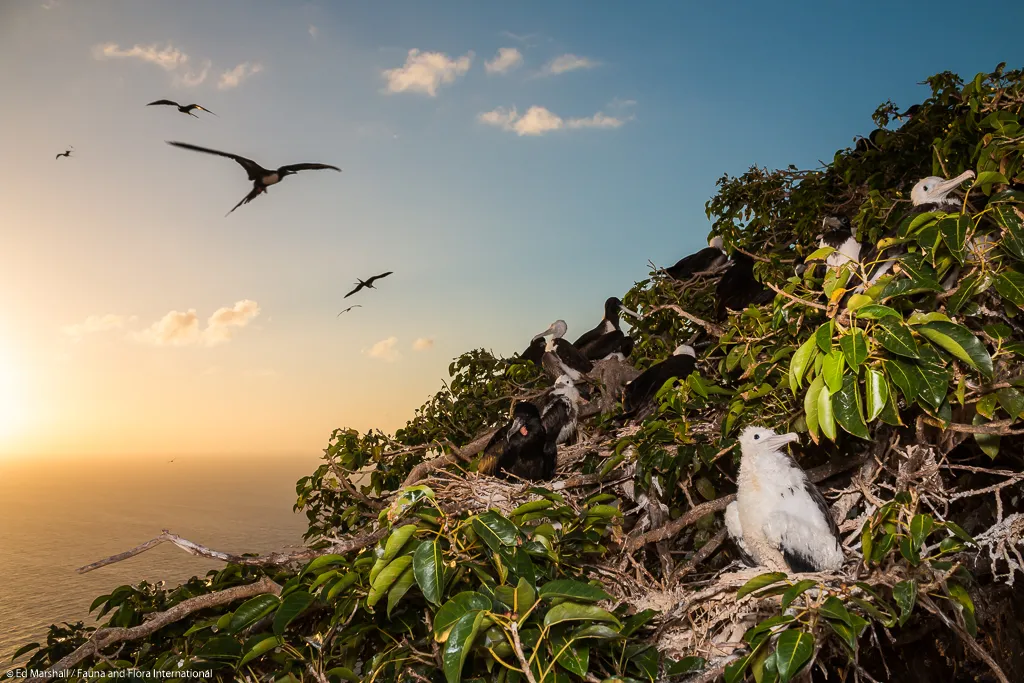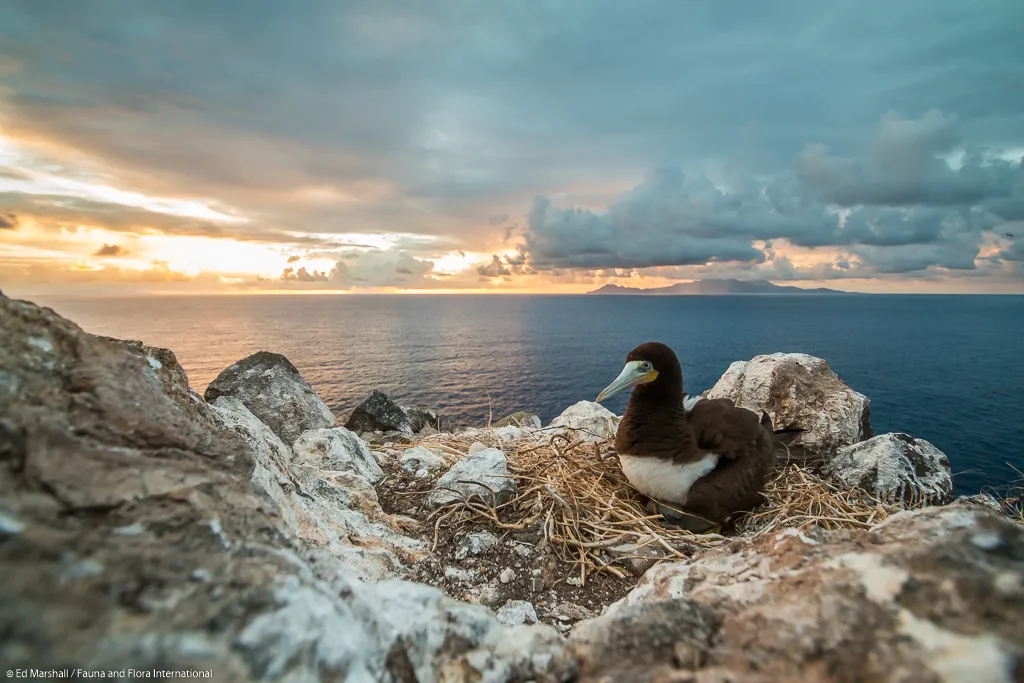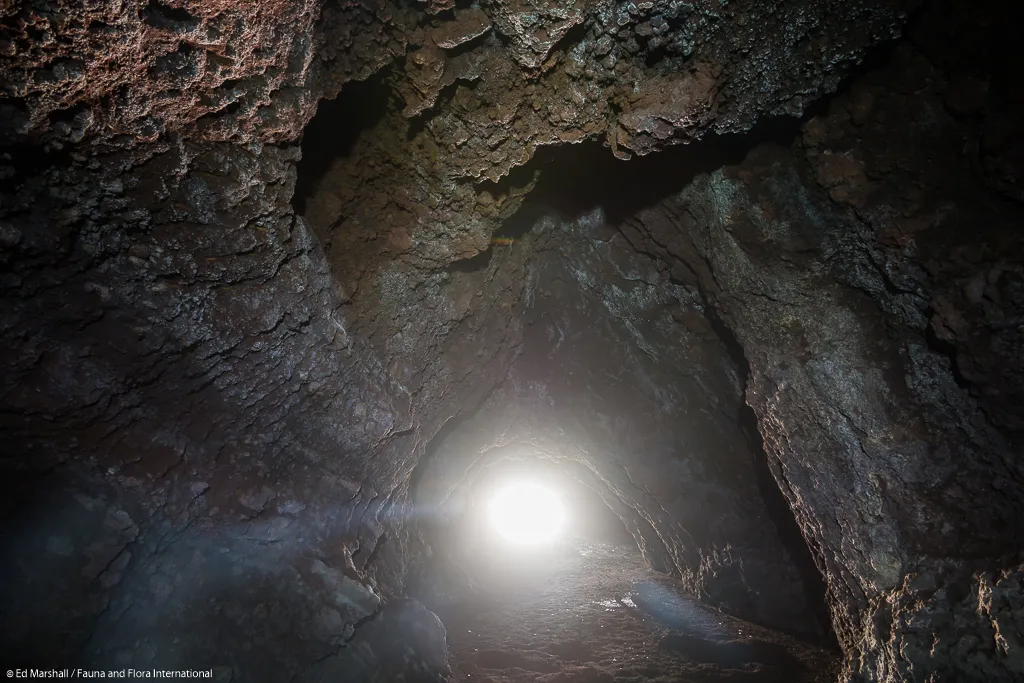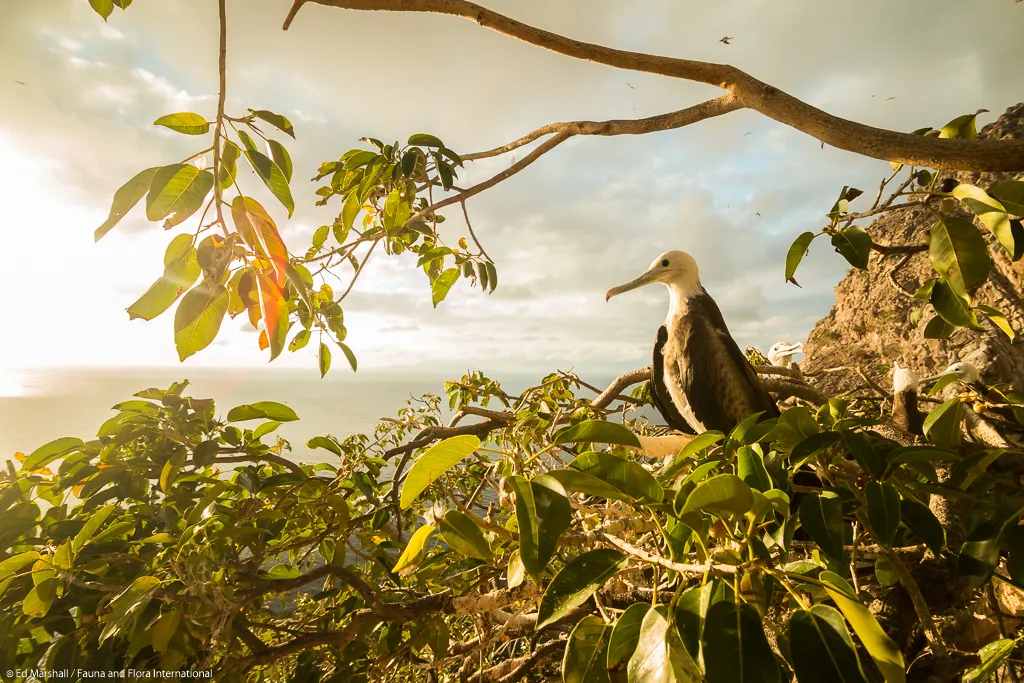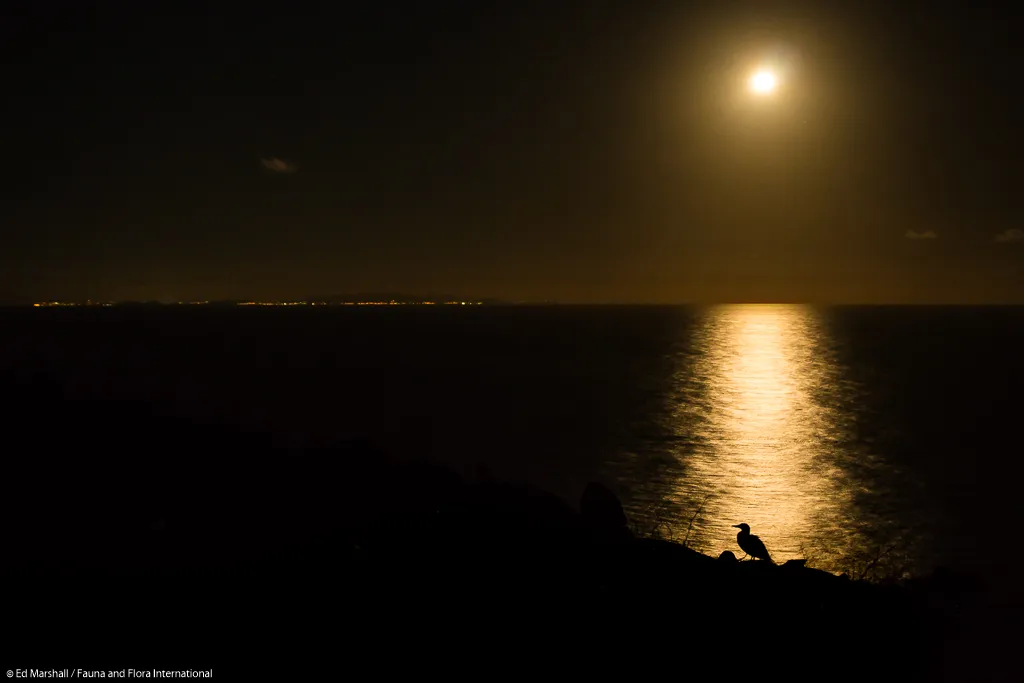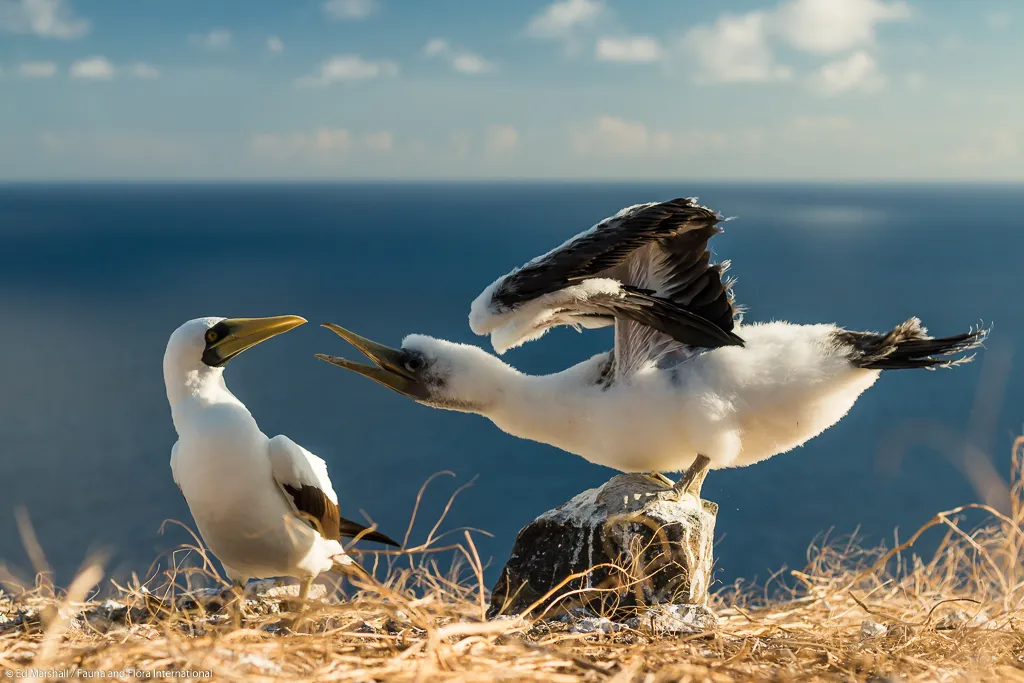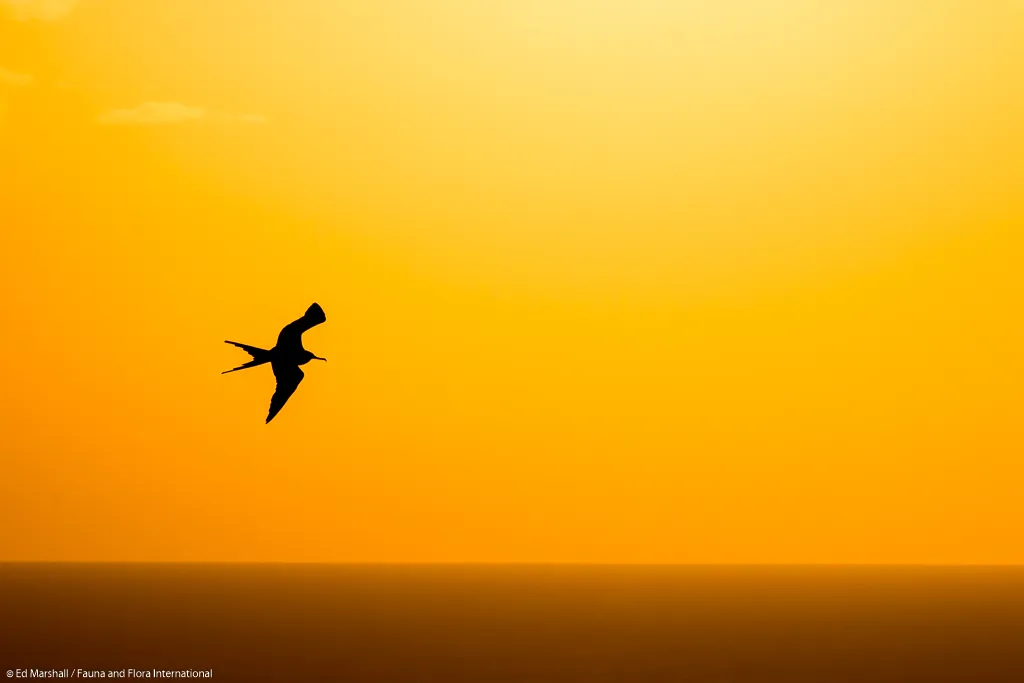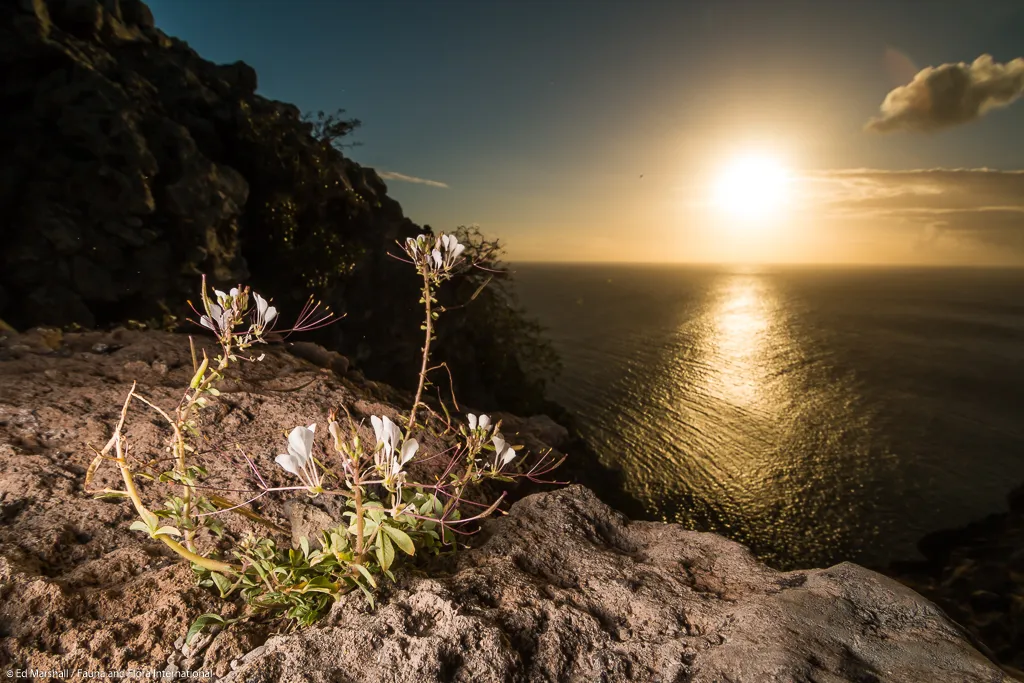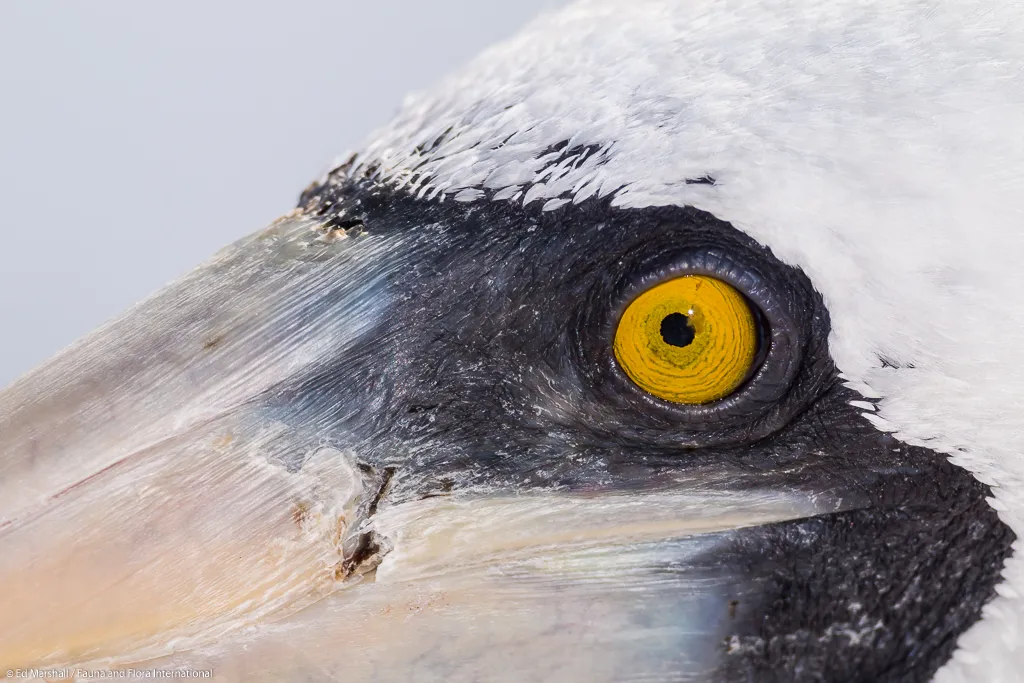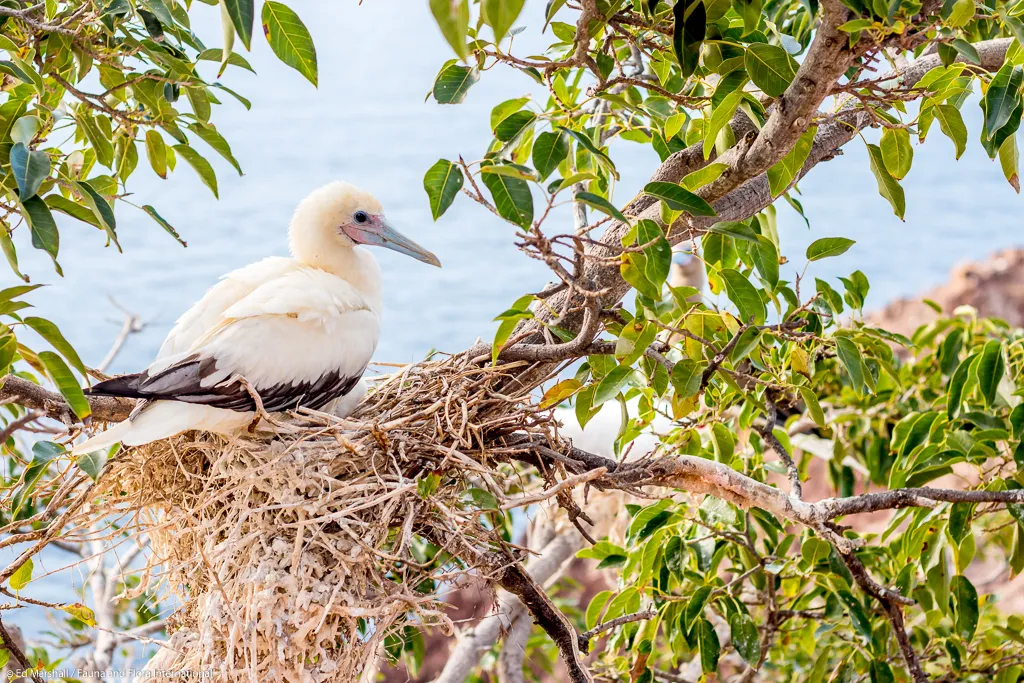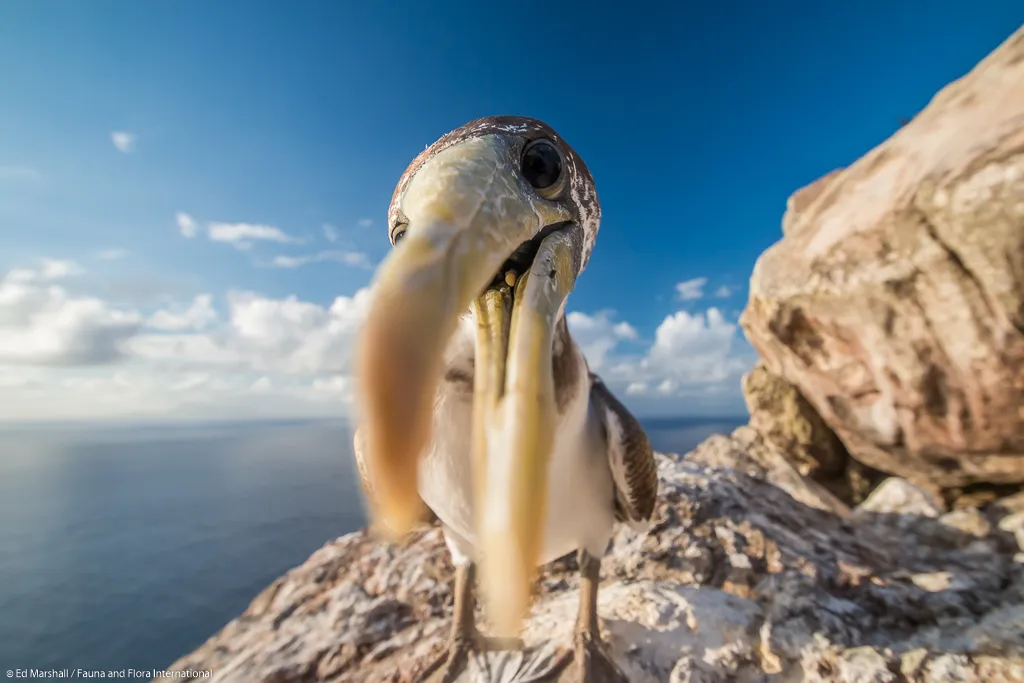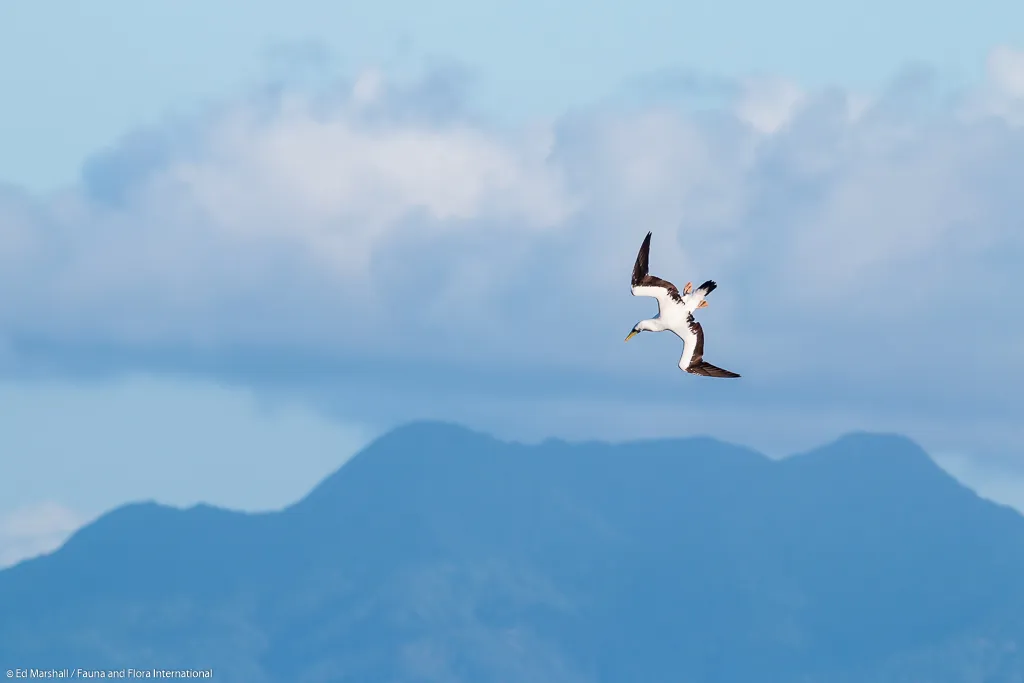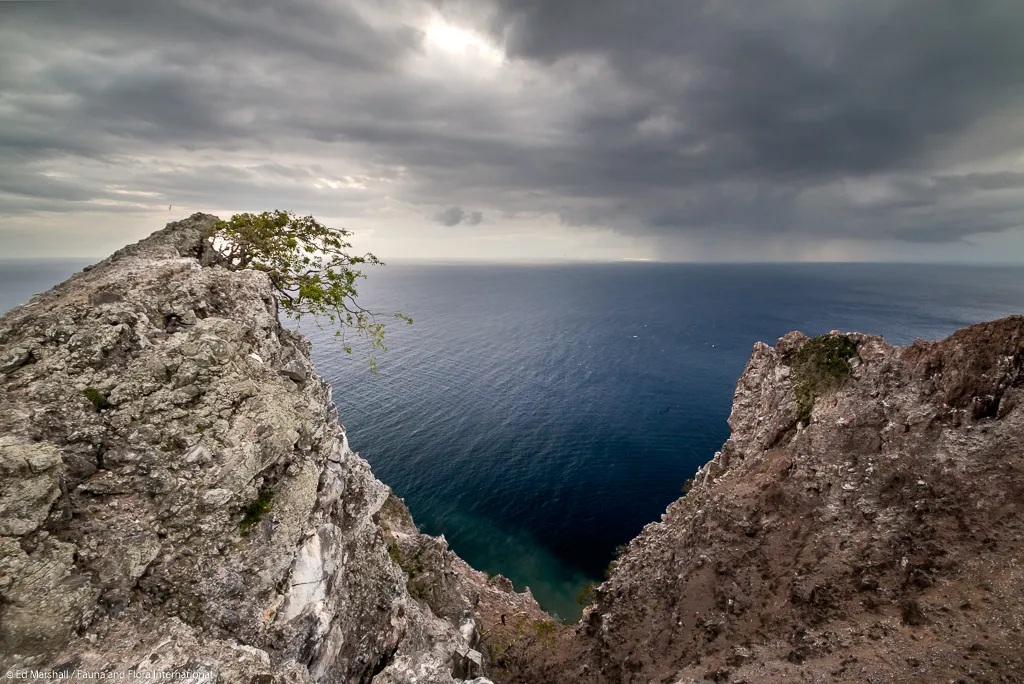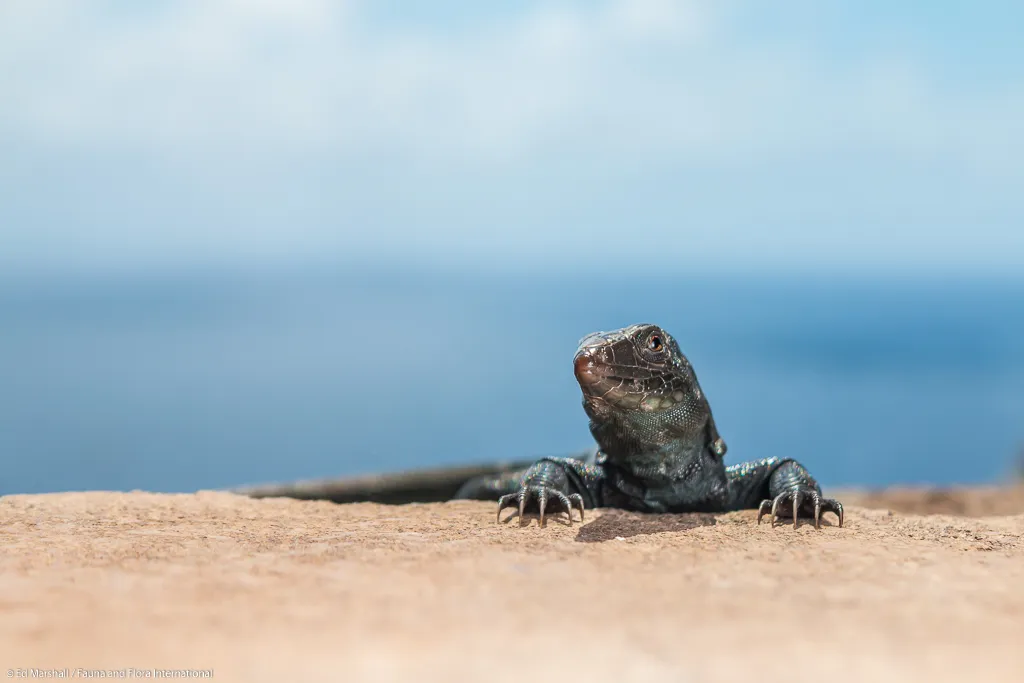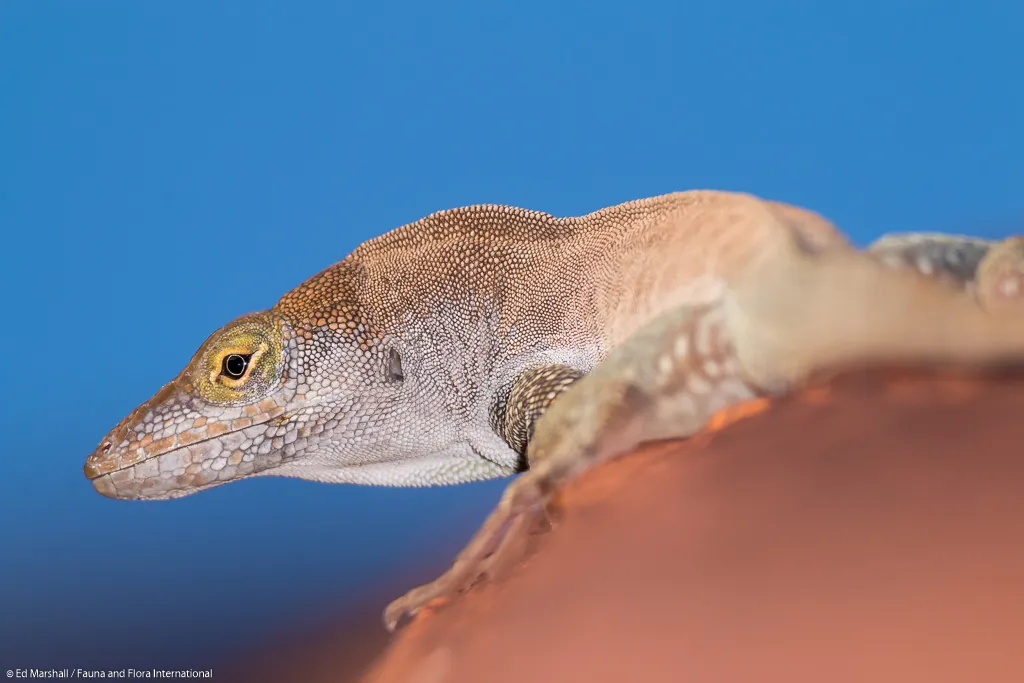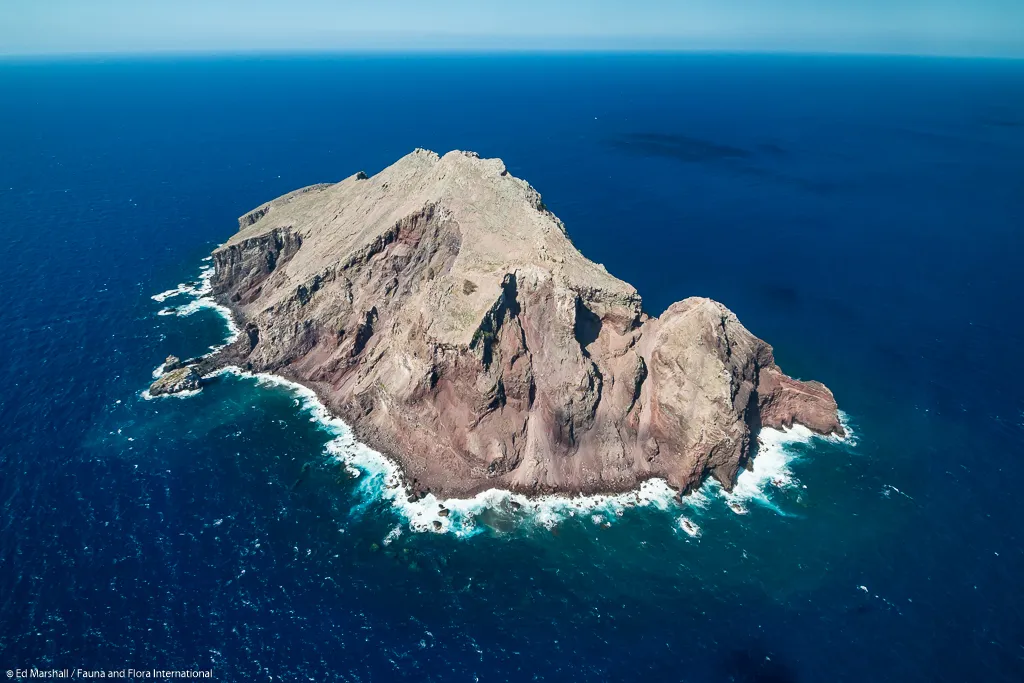The island of Redonda is located to the South West of Antigua, in the West Indies, and is home to a number of native species such as the charismatic masked, brown, and red-footed booby's, beautiful island reptiles such as the Redondan dwarf gecko and the Redondan ground lizard, as well as unique insect and plant species. These were under threat from the presence of non-native species introduced by humans. Thanks to the efforts of the Redonda Restoration Programme, the removal of these non-native species has encouraged Redonda to begin its transformation from a dry and rocky landscape into a vegetated and thriving island.
About the photographer
Ed Marshall is a widely published nature and conservation photographer based in the UK. Over recent years he has become increasingly involved in conservation projects, such as the RSPB's Isles of Scilly Seabird Recovery Project, and he particularly enjoys the challenge of working in remote and harsh environments.
View more of his photos on his website.
To view the images as a slideshow, click on the arrows in the top right hand corner of the photos below.
Magnificent frigatebirds nesting, Redonda. On the Western face of Redonda, there was one Ficus tree in particular that proved popular with these seabirds. I headed there at sunset to capture this image. © Ed Marshall/Fauna & Flora International A brown booby on its nest, Redonda. While carrying out monitoring work, our transects would take us near to breeding seabirds nests, allowing them to get used to our presence, and for me to grab images like this. © Ed Marshall/Fauna & Flora International Centaurs Cave, Redonda. A tricky to reach monitoring station in the depths of this cave. It would have been a location that the miners would blast through rock to extract guano for its phosphates.© Ed Marshall/Fauna & Flora International Magnificent frigatebirds, Redonda. While carrying out monitoring work we often passed close to these trees and their inhabitants allowing for unique images like this to be captured. © Ed Marshall/Fauna & Flora International A masked booby silhouetted against the rising moon, Redonda. As the rising moon reflects its light on the water, my team mate Thea pointed out the birds silhouette against the sea. © Ed Marshall/Fauna & Flora International A male magnificent frigatebird comes in to land, Redonda. Watching these prehistoric birds was a highlight from the trip. Space in the tree was limited and so squabbling amongst neighbours was inevitable. © Ed Marshall/Fauna & Flora International Masked booby chick pesters its parent, Redonda. This family were nearest to our base, and I got to watch the chick go through all the stages of growth, from a young chick to fledging. © Ed Marshall/Fauna & Flora International Magnificent frigatebird at dusk, Redonda. It was always great to watch these birds glide across the sky, silhouetted against the rich golden light of the setting sun. © Ed Marshall/Fauna & Flora International Cleome, Redonda. This incredibly hardy plant was the most common during our time on the islands. It manages to grow in dry conditions such as that on this island, but would florish after rainfall. © Ed Marshall/Fauna & Flora International Masked booby preens, Redonda. Our neighbouring booby family would often perch on this rock. I lay down on the floor next to them and captured this image. © Ed Marshall/Fauna & Flora International A masked booby close up, Redonda. I combined my 400mm telephoto lens with extension tubes. This allowed me to fill the frame, but also to avoid getting too close and upsetting the bird. © Ed Marshall/Fauna & Flora International Montserrat in the distance, as seen from Redonda. The light pollution illuminating the island, almost as though the volcano had erupted. © Ed Marshall/Fauna & Flora International Red-footed booby, Redonda. Towards the Northern end of the island was this nesting Red-footed booby, that allowed for a nice composition of it on its nest, framed by the leaves of the tree. © Ed Marshall/Fauna & Flora International Inquisitive masked booby chick, Redonda. This location was where one of my favourite chicks lived and on this occasion I used my wide angle lens. It noticed the reflection in my lens and would very gently tap on the lens filter. © Ed Marshall/Fauna & Flora International A masked booby carves through the air, Redonda. One of my all time favourite sounds is the noise these birds made as they stooped and dropped down to the ground, the air rushing past their wings and tail feathers. © Ed Marshall/Fauna & Flora International Aerial view of our camp, Redonda. Here we see the Managers House from the air, and the collection of tents where the team slept each night. © Ed Marshall/Fauna & Flora International Ficus tree, Redonda. When the we carrying out the restoration work, few trees were to be found. The majority of them were Ficus trees and often grew on the steep sides of the island. © Ed Marshall/Fauna & Flora International Redondan ground lizard, the largest species found on Redonda. © Ed Marshall/Fauna & Flora International Tree lizard, Redonda. This Redondan tree lizard is a type of Anole, and they would often bask on the old metal pieces of mining machinery, soaking up the heat. © Ed Marshall/Fauna & Flora International The Redonda Restoration Programme is a collaborative programme between a range of organisations. © Ed Marshall/Fauna & Flora International 